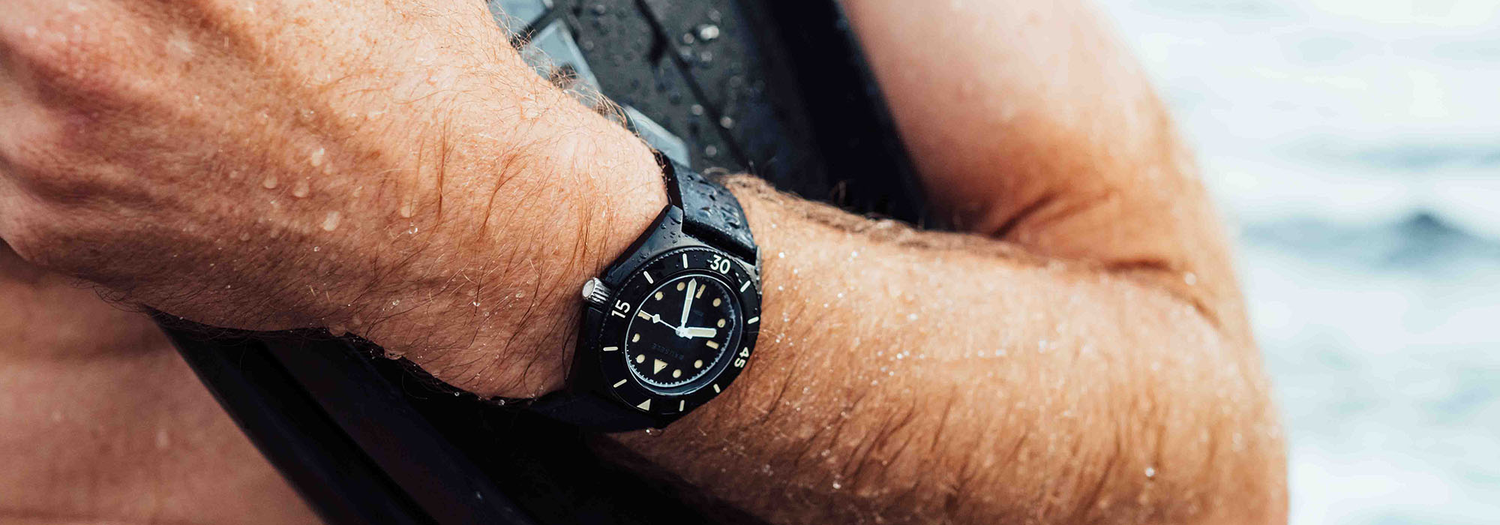Hornet: Air Force News 1981
Reasons why the F/A-18 was chosen
If our force is called upon to defend this country or its interest, it may have to do so alone, not as part of a larger allied force having the range of capabilities possible with a mixture of aircraft. We therefore sought an aircraft versatile in several roles, against both air and surface targets, in all weather conditions.
We could not favour an aircraft because of its excellence in any one particular quality. In air combat, our fighters are likely to have to operate over and beyond our vast northern regions without the extensive and close control available in the European environment.
Hostile surface forces would usually have to cross large expanses of water. Australia's tactical fighter therefore requires long range and endurance to be able to seek out its targets at a distance.It requires a comprehensive array of air-to-air and air-to-surface weapons necessary to engage them.
The nature of our land is such that we must be able to deploy our tactical fighter force at short notice, over long distances, into bare bases, and to operate there supported by extended air re-supply links. The aircraft we sought therefore had to be maintainable with the minimum of front line support equipment. It had to be superior qualities of reliability and operational availability.
We also sought minimal peacetime training losses of aircraft and pilots. Because the aircraft chosen must see us through the next twenty years or more, we sought the potential to accommodate the improved weapons and other systems that will undoubtedly emerge during its long life span.
These are the operational factors that bore on the selection — a selection which, to a large extent, will determine the shape of the RAAF into the next century.
We had to choose between two magnificent aircraft — the F/A-18 and the General Dynamics F-16. Both in their different ways are splendidly impressive and capable machines. However, it has become clear that, in relation to the operational factors I have just indicated, the F/A-18 will be better suited to our needs.
The F/A-18 has been developed from the outset as a multi-role aircraft, with all-weather, air-to-air and air-to-surface missiles, and all-weather navigation and weapons targeting systems. These systems give it unparalleled flexibility.
Because it was designed to operate from aircraft carriers, reliability and ease of maintenance were essential elements of the specification of the F/A-18. The testing programme has established confidence that these objectives — and from them a very high level of availability — will be achieved.
The F/A-18 is well suited to deployment and operation from forward bases because it requires relatively little airfield support and test equipment. It is well suited to our operating, deployment and maintenance requirements. It has good potential for adding improved weapons and other systems as these become available. It has features which strongly support the pilot in the efficient and safe prosecution of his mission.
Finally, my advisers are unanimous in their advice that, principally because of its twin engines, the F/A-18 offers a clear prospect of fewer losses throughout its operating life. The aerodynamic problems evidenced in the F/A-18 have been satisfactorily resolved.
The U.S. Department of Defense has now given approval for full production of the aircraft in the air-to-air fighter role. Clearance of additional weapons for the air-to-surface attack role is not due until about this time next year. My advisers are now confident that the outcome will be acceptable, but we will be requiring the U.S. Navy not to place the main contract for our aircraft until this clearance is available.
Sufficient structural fatigue testing has been completed to clear the F/A-18 for its first ten years of operation. Tests necessary to give assurances of a further ten years of life will continue until 1984. Any consequential modifications to achieve this will be known by then.
To implement the project, we are making arrangements that will allow this country to place its experts within the U.S. Government's project management team. They will participate in its day-to-day processes. This includes the costs of some configuration changes to meet the RAAF's operational requirements. and the cost of simulators, spares, test equipment, training equipment and the like.
It also includes the cost of new buildings and overhaul facilities at RAAF bases and the costs of establishing important support capabilities in Australian industry. A contingency sum has been included where risks remain.
The overall project cost for the F-16 would have been some 7 per cent less than for the F/A-18. However, it is estimated that when we take account of running and support costs and of attrition throughout the life of the aircraft this difference will be substantially reduced. The F/A-18 costs have grown during development. I cannot rule out further increases. I have said that there - could be modifications flowing from structural testing. They are not expected to be costly.
The chief risk appears to be the possibility of reduction in the production rate in the early years of the program, thus increasing production costs. To contain cost growth, the Government is stipulating that the manufacture of the first of our aircraft should not precede a specified number of aircraft in the U.S. programme. Unless we decide otherwise. In this way we will secure for Australia the benefit of the continuing testing and development of the aircraft and of early U.S. squadron experience.
These and other arrangements too detailed to relate now give us advantages that we have not had in the management of earlier programs. The tactical fighter force project is a major national enterprise. It will involve not only the RAAF and my department, but a host of contractors and sub-contractors in Australia's defence-related industry.
It will develop our technological and industrial capacity in an area critical to our defences but also important on a wider national basis. The presence in this part of the world of repair and overhaul facilities for the F/A-18 will be a significant military advantage also for our ANZUS ally, the United States. The benefits of inter-operability and common support will be of value to both nations.
I now inform the House of a further major decision concerning the RAAF's long-range maritime patrol force. Instead of the modernisation announced last year of the older P3B Orion aircraft, the Government has decided to sell the P3BS and to acquire ten more P3CS subject to satisfactory contractual negotiations.
The cost of proceeding this way is estimated at $240 million. It involves a premium of some $50 million which, in the Government's view, is worth paying. We shall avoid the major disruption of the maritime patrol force involved in a major modernisation of half of its aircraft.
The P3Bs when modernised, would have had a life expectancy of less than half of that of the existing P3CS. which will not need replacement until beyond the end of the century. The new aircraft will be equipped, as are the ten P3CS we now operate, tor the Harpoon and anti-ship missile and the Australian-developed Barra Antisubmarine Sonobouy system. I expect the first aircraft to be delivered in 1985 and the entire squadron to be re-equipped by 1987.
The RAAF'S operational flexibility will be improved by additional fuel storage capacity at Tindal, Williamtown, Amberley and Richmond. Planning will continue for facilities at Williamtown to support the new tactical fighter. The Government proposes to improve the airfield at Woomera so that it can be used more intensively by all the types of aircraft operated by the Defence Force.
The increasing technical sophistication of modern defence equipment requires additional trained manpower. Accommodation to cope with extra trainees is to be provided at RAAF Technical Training Schools at Wagga and Laverton. Plans are also being developed for new training facilities at the RAAF School of Navigation at East Sale.
I announced the intention to build two FFG-type ships at Williamstown Naval dockyard, subject to satisfactory resolution of a number of problems affecting productivity there. Meantime, the Government has decided to order long-lead items from the United States for the construction in due course of the first vessel.
In making this decision now, we make it possible — should the problems that have beset Williamstown in recent years be resolved — to begin construction of the ship there next year. If there is no improvement — and I want this to be clear — we shall have to look to construction elsewhere. An order of long-lead items for a follow-on destroyer involves no commitment to build at Williamstown.
Our plans for the development of the Australian-designed minehunting catamaran are proceeding and tenders for construction of two prototypes are presently being evaluated. But to complement these minehunters we need to be able to sweep mines. I confirm to honourable members that the British Hunt class is under consideration for this role. We have the opportunity to acquire vessels ordered originally for the Royal Navy.
However. I want to mention three more projects today. All three will be implemented in such a way as significantly to enhance Australian self-reliance. The first is the establishment of production capability and the initial manufacture by Australian industry of a new 105mm artillery weapon of an overseas design. On the successful completion of this pre-production phase, the weapon and its ammunition will be ordered in substantial numbers. It will be considerably more capable than our existing 105mm guns.
The second, Project Raven, aims to provide the Army with a new family of single-channel portable tactical radios. Thirdly, I inform the House of the Government's decision to spend over a period of several years, some $580 million on expanding the Army's operational reserve of ammunition. Some $60 million of this will be spent on manufacturing ammunition in Australia, including types of ammunition not previously produced here.
Summary and specifications
NUMBER ordered: 75. Single seat — 57, dual — 18
COST: Total program cost $A2430 million at August 1981 prices
Average unit flyaway cost $A21.5 million at August 1981 prices
(Note that these prices do not include allowance for future inflationary price movements or currency exchange fluctuations).
DELIVERY: Two US-built aircraft, October, 1984. Australian built aircraft from April 1985 to 1990.
BASING: Williamtown, NSW — two operational squadrons and an operational conversion unit. Darwin, NT — one operational squadron.
MANUFACTURER: McDonnell Aircraft Company.
AUSTRALIAN maker: A variety of Australian companies will participate in the F/A-18 program. Final assembly and test will be done at Government Aircraft Factory, Avalon, near Melbourne.
ROLES: Multi-mission — air intercept, air combat, fighter escort, interdiction (including anti-shipping strike), and close air support of ground forces.
ENGINES: Two General Electric F404 low by-pass ratio turbofans of 7260 kg (16,000 lb) thrust.
AIRFRAME: Single seat, twin tail. (18 two-seat trainers to be included in the Australian order).
SPEED: Mach 1,8.
CEILING: Above 15,000m (50,000ft). RANGE, endurance: 750km intercept radius without external fuel tanks; 1300km intercept radius with external fuel tanks; in excess of 1000km strike radius; 3700km ferry range. Probe and drogue in-flight refuelling capability.
ARMAMENT: AIM-9 Sidewinder infra-red seeking missiles; AIM-7 Sparrow radar guided long-range missiles; one 20 mm rapid-fire cannon; conventional or laser-guided bombs; Harpoon anti-shipping missiles. Nine external hard points for weapons, fuel tanks and sensors.
DIMENSIONS: Length 17.07m (56ft), wingspan 12.2m (40ft), Maximum take-off weight 23,600kq (52,000lb), Maximum payload 7300kg (16,0001b).
AVIONICS: Hughes APG 65 multi-code radar; inertial navigation system; VHF omni-directional range/instrument landing system); tactical air navigation system; two mission computers; two combined UHF/VHF radios; HF radio; data link; integral electronic counter measures; head-up cockpit display, multi-function cathode ray tube cockpit displays, automatic moving map cockpit display; forward-looking infra-red pod; radar warning receiver; chaff/flare dispenser.





